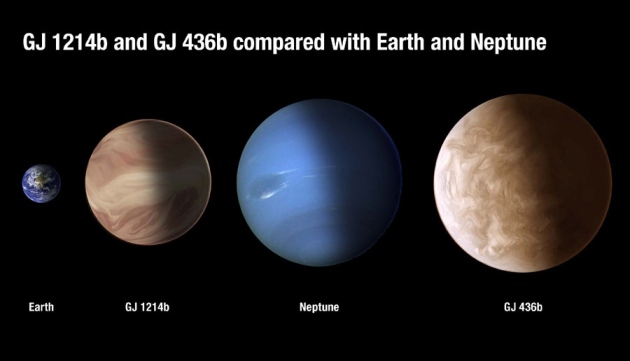First ever weather forecast for alien 'super-Earth'
China.org.cn/Chinagate.cn, January 2, 2014 Adjust font size:

Photo: NASA & ESA
Kreidberg says that the atmosphere could still be made mostly of water vapour. "But we found there also have to be clouds," she says.
Those clouds would be unlike any on Earth, given the temperatures and pressures in the exoplanet's atmosphere. They could be made of something like zinc sulphide or potassium chloride, as both of these compounds would condense into microscopic droplets, and thus form clouds, under such conditions. "It's the first time that we've been able to characterize the atmosphere of an exoplanet smaller than Neptune," says Kreidberg.
Similar clouds may also enshroud the larger, Neptune-sized world known as GJ 436b, located about 10 parsecs (33 light years) away. Caltech's Knutson and her colleagues targeted this planet because it is an archetype of many similarly sized exoplanets. Like Kreidberg's team, these scientists also used the Hubble telescope to watch changes in a star's light as the planet passed in front of it.
Once again, the star's spectrum showed no imprint of the planet's atmosphere. And once again, the options are either a cloudy atmosphere or one that is weighed down by heavy molecules such as water or methane.
Neptune is made mostly of hydrogen and helium, so a Neptune-sized object with a heavy atmosphere would defy expectations, says Knutson. "We thought this was just a Neptune analogue, but if it doesn't have a lot of hydrogen we have to think harder about how you would build a planet like that," she says.
Both new studies show how clouds are cropping up on more and more exoplanets, says Julianne Moses, a planetary scientist at the Space Science Institute in Boulder, Colorado. In October, a team led by scientists at the Massachusetts Institute of Technology in Cambridge reported mapping clouds on two different hemispheres of a planet called Kepler-7b.
The results were published in the British journal Nature.


